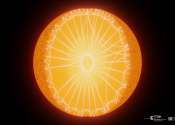'Tube map' around planets and moons made possible by knot theory
Just as sat-nav did away with the need to argue over the best route home, scientists from the University of Surrey have developed a new method to find the optimal routes for future space missions without the need to waste ...









